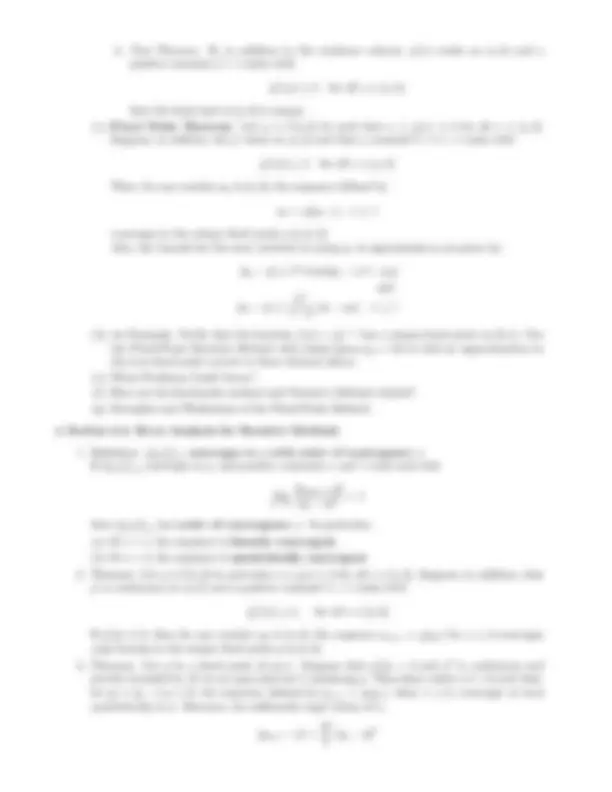




Study with the several resources on Docsity

Earn points by helping other students or get them with a premium plan


Prepare for your exams
Study with the several resources on Docsity

Earn points to download
Earn points by helping other students or get them with a premium plan
Community
Ask the community for help and clear up your study doubts
Discover the best universities in your country according to Docsity users
Free resources
Download our free guides on studying techniques, anxiety management strategies, and thesis advice from Docsity tutors
An overview of root finding algorithms used in numerical analysis to solve nonlinear equations in one variable. The bisection method, secant method, and newton's method, discussing their algorithms, strengths, weaknesses, and convergence issues. Students can use this document as a study guide for understanding the concepts of root finding and solving nonlinear equations.
Typology: Study notes
1 / 4

This page cannot be seen from the preview
Don't miss anything!



MATH 441/541 - Numerical Analysis Third Meeting: Root Finding Algorithms Thursday, September 6 th, 2007
OBJECTIVE: Given the continuous function f on the interval [a, b] where f (a) and f (b) have opposite signs, find a solution to f (x) = 0.
INPUT: endpoints a and b; tolerance TOL; maximum number of iterations N (and f ).
OUTPUT: approximate solution p or message of failure.
(d) The Secant Method Algorithm (e) An Example: Use the Secant Method with initial guesses p 0 = 2 and p 1 = 3 to find an approximation to the solution to x cos(x) = 3 + 8x − x^3 correct to three decimal places. (f) What Problems Could Occur? (g) Strengths and Weaknesses of the Secant Method:
(e) The Relation to the Secant Method (f) An Example: Use Newton’s Method with initial guess p 0 = 2 to find an approximation to the solution to x cos(x) = 3 + 8x − x^3 correct to three decimal places. (g) What Problems Could Occur? (h) Strengths and Weaknesses of Newton’s Method: